- Yunnan -
Differing much from any other places in China, Yunnan is an exotic, amazing and unforgettable place, if you travel around Yunnan and see everything with your own eyes, it’ll make you believe that these words are true. Being one of the most popular tourism destinations, here you will find that this is such a pure place which contrasts as far as you can feel the harmonic neighborhood of high mountains, tropic forests, waterfalls, and distinct folk customs.
Yunnan is so popular and attractive tourism destination as far as when you travel Yunnan you have an opportunity not only to visit the best places in Yunnan and enjoy the fascinating sightseeing and attractions but also spend an unforgettable time on such a diverse minority group people living places. Yunnan as one of the largest provinces in China, it becomes an important and most attractive tourism destination nowadays. In case you decide to travel Yunnan, we suggest that the best places in Yunnan or even in China such as Shangri-La, Lijiang, and Dali and so on.
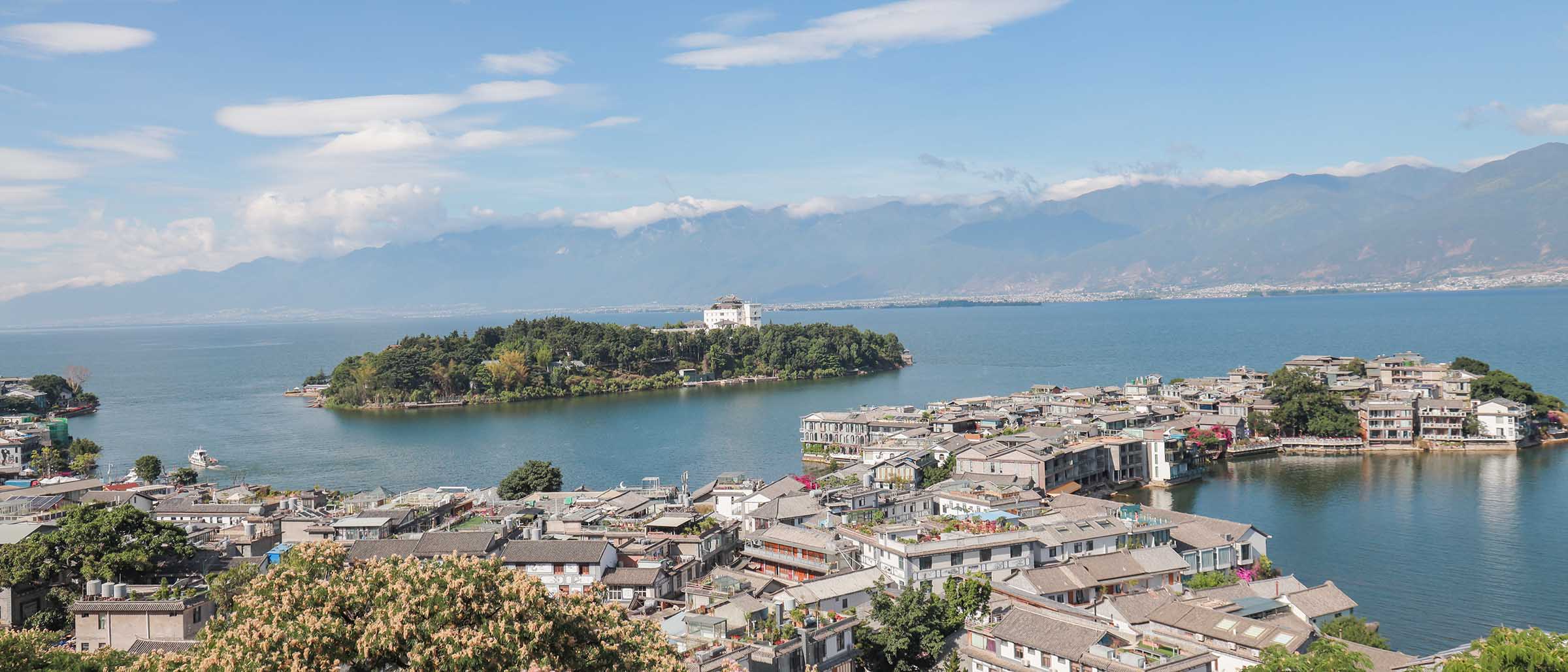
Basic Information
Chinese Name: 云南(Yun nan)
Location: Southwestern in China, borders Guangxi Zhuang Autonomous Region and Guizhou Province in the east, Sichuan Province in the north, and Tibet Autonomous Region in the northwest, and shares a border of 4,060 km with Myanmar in the west, Laos in the south, and Vietnam in the southeast.
Provincial Capital: Kunming
Area: Total area is394,000 square kilometers and the average elevation is 2,500-3,000meters
Famous Cities: Kunming, Dali, Lijiang, Shangri-La, Xishuangbanna
Population(2018): Yunnan has a population of 48.300 million (as of 2018)
Major Ethnic Groups: Yi, Bai, Hani, Zhuang, Dai, Miao
Yunnan History
Yunnan used to be an independent kingdom which was occupied by a large number of non-Chinese aboriginal peoples who lacked any strong political organization during the Qin and Han Dynasties (201BC-263AD). During the Tang Dynasty (618-906), the local minority Bai established a powerful kingdom, Nanzhao, south of Dali. Initially allying its power with the Chinese against the Tibetans, this kingdom extended its power until, in the middle of the 8th century, it was able to challenge and defeat the Emperor's armies, Tang troops. It took control of a large slice of the south-west and established itself as a fully independent entity, dominating the trade routes from China to India and Burna.
Dali Three Pagodas The Nanzhao kingdom fell in the Song Dynasty (960-1279)and was replaced by the kingdom of Dali (the name Dali has been used until today for the Bai Autonormas Prefecture). During the Yuan Dynasty (1280-1368), Khubla Khan conquered the area. This part of the south-west was finally integrated into the empire as the province of Yunnan. During the Second World War Yunnan was the strong point of defense against the Japanese invaders. The "Burma Road" ended in Yunnan and the "Flying Tigers" earned their reputation flying military supplies and equipment into this province. After World War II Yunnan was largely spared the fierce fighting between the Communists and Nationalist/Imperialists with only a few small skirmishes taking place on Yunnan soil.
Yunnan Geography
Yunnan is located in the southwest and borders Sichuan to the north, Tibet to the northwest and Guangxi and Guizhou to the east while sharing a western border with Myanmar, a southern border with Laos and a southeastern border with Vietnam. It is China’s sixth largest province, covering an area of 394,000 sq. km.
Yunnan possesses a mountainous terrain that stretches across the province and reaches a high point of 6,740m at Kawagebo Peak in Deqin. The average elevation is 1,980m. In addition to the vast mountains, Yunnan is also characterized by canyons and rivers, specifically the three parallel rivers that include the Nu River, the Yangzi River and the Mekong.
There are also many lakes in Yunnan that have provided a foundation for human civilizations for over a million years, most notably Dian Chi in Kunming, Erhai Lake in Dali and Lugu Lake in northern Yunnan.
In the east, Yunnan covers a limestone plateau with dramatic karst formations and southern Yunnan covers a lush, tropical jungle along the border of Vietnam and Laos.
Yunnan Climate
Yunnan enjoys a tropical highland humid monsoon climate, characterized by cool summers and warm winters. The annual average temperature lies between 13-20°C; January average temperatures range from 8°C to 17°C, and July averages vary from 21°C to 27°C. The annual rainfall is 1100 mm, with over half the rain occurring between June and August.
The fair weather is the result of the province's location on south-facing mountain slopes, receiving the influence of both the Pacific and Indian oceans. The plateau region has moderate temperatures. The western canyon region is hot and humid at the valley bottoms, but there are freezing winds at the mountaintops.
In Kunming, it always feels like Spring. In Dali, it is, despite its the altitude of 2000 meters, most often warmer. Sometimes a cool fresh wind blows through the area. This is the result of Dali's location between the beautiful Lake Erhai and the Cangshan mountains, rising up to a height of 4200 meters (1300ft).
Lijiang is located at an altitude of 2200 meters. It can get quite warm during the day, but in the evening it soon turns chilly. In Shangri-La, the sun may be even stronger than in Lijiang. But, because of the town's altitude at a height of 3200 meters, and its situation close to Tibet and the Himalayas, warm clothing is advised for evenings and nights. The southern part of Yunnan (Xishuangbanna) enjoys sub-tropical to tropical temperatures.
Yunnan also is very beautiful and fairly warm during winter. In January the trees are full of flowers, with sometimes some snow left on the tops of the mountains.
In fact, there is not such a thing as "Best time to travel" applicable in Yunnan. It is actually very pleasant all year round.
Yunnan Minority Culture
In total, you can find 56 ethnic minorities. Only in Yunnan, you encounter 26 officially recognized ethnic minorities, among which are the Bai, Dai, Yi, Naxi, Hui, Mosuo, Hani, Miao, Pumi, Lahu, Tibetans, and Lisu. Just to mention a few.
Different ethnic minorities have different customs, etiquettes, costumes, religious beliefs and even languages. Their colorful lifestyle, dancing, and singing are a feast to your eyes and ears.
These 26 minorities form one-third of the total population of the province. Besides, the province is home to around 30 million Han Chinese. The Han constitute the majority of the people in China.
Yunnan is one of the most ethnically diverse provinces in Asia. The Bai and Dai are among the few registered ethnic minority groups to have populations over the one million mark. Yi, Naxi and Hani ethnic groups have also surpassed this mark. The Miao, Lisu, Hui, Lahu, Wa, Yao, Jingpo and Tibetan minorities all have populations exceeding 100,000, while the Bulang, Buyi, Pumi, A'chang, Nu, Jino, De'ang, and Mongolian groups each exceed 10,000. The Shui, Manchu, and Dulong have more than 4,000 members each.
The Southwest had been invaded many times in the course of the Chinese emperors’ attempts to unify the empire. Through these invasions, culturally uniform Han Chinese standards and values were introduced to ethnic minorities’ civilizations. On the other hand, inter-ethnic and cross-cultural exchanges were common along the trade routes in the mountainous regions of Yunnan Province.
Yunnan Cuisine
With its rich biodiversity and diverse ethnic minority population, Yunnan is a tantalising melting pot of exotic ingredients, vibrant flavours, and ethnic flair. Yunnan cuisine is sometimes referred to as Dian cuisine and is known for its moderately spicy and sour dishes that boast an unexpected sweetness. Each signature dish attempts to preserve the original taste of each ingredient used and this is what makes Yunnan’s style so unique.
Mushrooms and mints feature as a prominent ingredient in many dishes, but other unusual ingredients include flowers, ferns, algae and even insects. Just don’t try to worm your way out of eating these peculiar treats, or you’ll regret it! In the south of Yunnan, the signature dishes have also been heavily influenced by Burmese, Lao and Thai style cuisine, meaning that ingredients such as lime juice, coconut, and palm sugar feature widely.
Tourism Resources
China's Yunnan Province is rich in natural resources and ethnic minority cultures. It has over 25 different ethnic minority groups and some of the most beautiful ancient towns in China. Visitors to Yunnan can witness the ancient ethnic minority cultures that have been handed down for centuries. The ancient towns of Lijiang, Dali, Shangri La, and the Xishuangbanna Dai Autonomous Prefecture are very popular destinations in Yunnan Province. The Three Parallel Rivers of Yunnan Protected Areas is one of the most exotic and enchanting areas in China. The charms of it are composed of torrential rivers, soaring mountains, splendid ethnic cultures, rare plants, and animals, highlighted by world-famous Lijiang Old Town and Shangri-la, a lost paradise for tourists.
In the north, there is the old Tea and Horse Road which leads to Tibet; the region is also the origin of tea in China. Due to the topography, Yunnan has the most abundant vegetation of the country. Additionally, the snow covered peaks add an extra charm to the region.
In contrast, southern Yunnan has a very impressive tropical region. The famous Xishuangbanna gives the impression of a trip to South America in the Amazon rainforest. Near Kunming, capital of the province, there is the end of the karst peaks chain started in Guilin area, several hundred kilometers away. This splendid mountain ends in the amazing Kunming Stone Forest.
Folk Festivals
Yunnan Province lying in the Southwest China has 26 ethnic minorities such as Yi, Bai, Dai, Hani, Miao, Hui, Naxi, Lahu, Jingpo, Yao, Achang,etc. It has the largest number of ethnic minorities in China which promotes its colorful culture and customs.
Every ethnic minority has its special festivals and celebrations. Numerous folk celebrations are held during the festivals in Yunnan.
Water Splashing Festival
Water Splashing Festival is the grandest festival for Dai ethic minority which is mainly celebrated in Xishuangbanna Prefecture. The festival is Dai people’s New Year which is around April 15 in the Gregorian calendar every year. Usually, the celebrations last three days and the third day is the New Year in Dai’s calendar. In the morning, all the Dai people wearing their festive costumes go to temple to wash the Buddha with clear water. Then they begin to express their sincere blessings by splashing water to each other. The clear water with best wishes can help people get rid of diseases and difficulties. People are pleased with being poured water which means more blessings.
The Torch Festival
The Torch Festival is one of the Yi people’ traditional festivals, originated in Yi regions in Yunnan, Guizhou and Sichuan Provinces. Bai, Naxi, Jino, Lahu ethnic minorities also celebrate the important festival. Naxi Torch Festival in Lijiang is the most famous festival among all the celebrations.
The celebrations are held on June 24 or June 25 in Chinese lunar year. A three-day celebration is with some different activities. People light a big torch or a bonfire in front of the house in order to pray the new life in the next year. The torch or the bonfire should be on for 3 days. Some young men go through the farmland and hills with small torches to pray a bumper harvest in the new year. Besides, there are horse racing, bullfighting, archery, wrestling, tug-of-war, swing matches and other entertainment activities during the Torch Festival.
Dage Festival
On February 8th in Chinese lunar calendar, Yi ethic minority in Dayao County collect all kinds of colorful flowers and tie up into flower arches or flower pergolas which symbolize a good luck. People also decorate cattle, sheep, houses, and fields with wild flowers. Yi people will get together to sing and dance with the instrument Lusheng.
There is a wide known legend of Miyilu who is a beautiful and smart girl. In order to help other girls get rid of getting harm by the bully she made a pretense of marrying him. In the end she died because the bully and she drank the poisonous wine in the wedding. Yi people in this region hold a grand flower arrangement in commemoration of the goodness Miyilu.
March Fair
March Fair, also call Sanyuejie in Chinese is celebrated by Bai people in Dali which is another famous place after Lijiang in Yunnan Province. The celebrations are held in the ancient Dali town during March 15 to March 21 in Chinese lunar year. The March Fair of Bai ethic minority is evolved from in ancient Buddha temple fair with a history of more than 1000 year. There are big trade fair, horse racings, dances during the March Fair. Thousands of people take part in the trade fair when the festival comes.
Miao people’s Huashan Festival
Huashan Festival is one of the most important festivals to Miao People. The time of this festival varies in different places. Usually, Huashan Festival in South Yunnan is celebrated from Spring Festival to January 15th in Chinese lunar Calendar. However, the celebrations are held on May 5th in Chinese lunar year in Kunming, Chuxiong and Zhaotong in Yunnan.
A large number of Miao people get together in the dance ground with festive costumes. Young people can express their love to each other. There is a ceremonious dance in the centre of the ground. Additionally, the celebrations also include climbing the pole, horse racing, bullfighting and archery matches.
Lisu Sword Pole Festiva
February 7th in Chinese lunar year is Lisu people’s Sword Pole Festival. The celebrations for the festival are held in Lisu hamlets along the Nu River (Nujiang in Chinese). A few strong young men jump into a sea of fire with bare feet and perform a variety of stunts. They also climb a pole with sharp swords without shoes and act some difficult moves on the dangerous pole. These performances are not only a kind of folk traditions and customs activities, but also show people the Lisu people’s extremely hard and bitter life experience and their indomitable spirits. At night, there are dances and singing around a bonfire.
Mount Cangshan
Chinese name: 苍山 (Cang Shan)
Location: Yince Road, 5 km west of Dali Ancient Town, Yunan province.
Ticket: Entrance ticket CNY40.00, round-trip cable car of Ximatan Cableway: CNY300.00, round-trip cable car of Gantong Cableway: CNY80.00, round-trip cable car of Zhonghe Cableway CNY100.00
Estiamted tour time: Half day to one day
Recommended time to visit: Whole year round
Nearby attractions: Dali ancient town, Erhai Lake, Three Pagodas
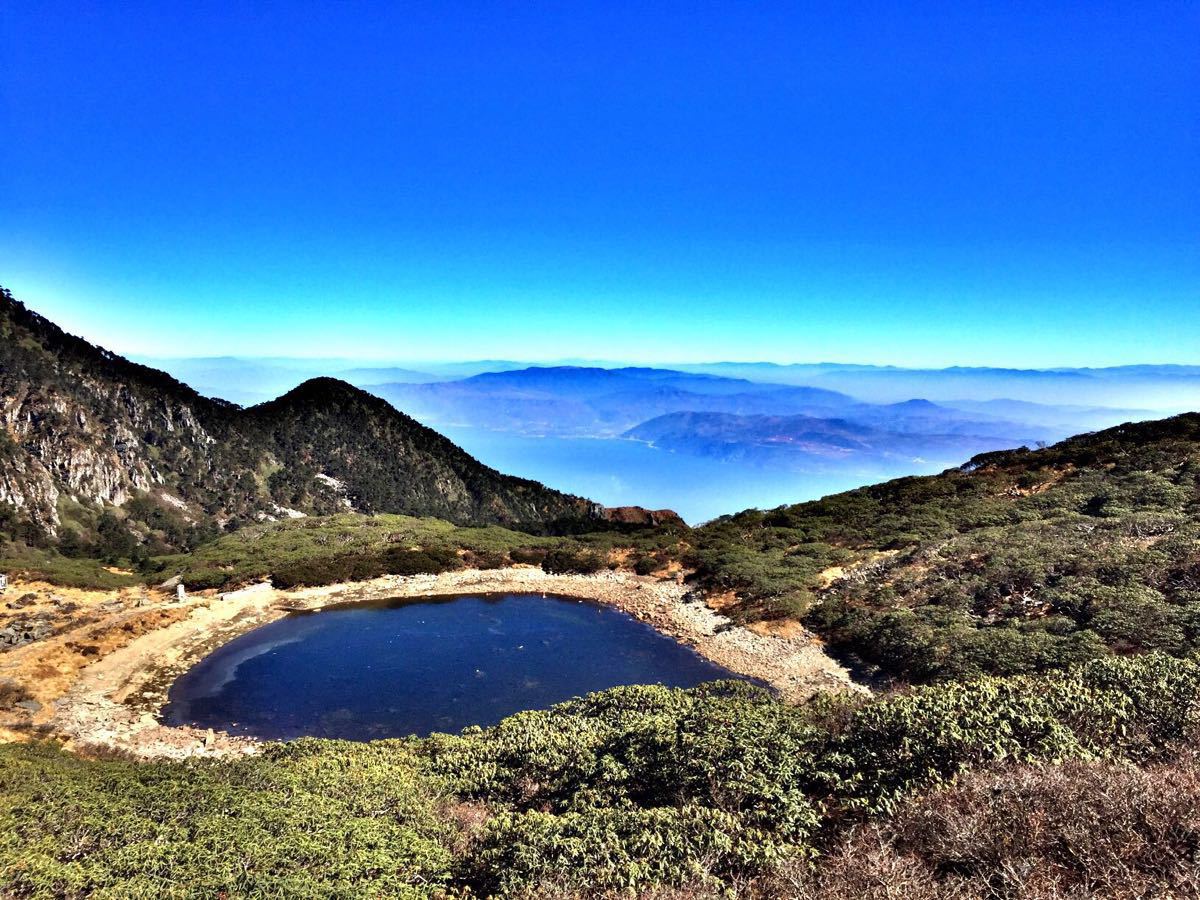
Cangshan Mountain (Mt. Cangshan) is the national geological park in China with 48 kilometers from north to south and 18 kilometers from west to east, located just to the west of Dali Old Town, Erhai Lake and Xizhou. just like a painted screen hanging magnificently around the elegant Erhai Lake.
Located in western Yunnan Province at the southern end of the lofty Qinghai-Tibet Plateau, Mount Cangshan is a young mountain formed only 50 million years ago. However, the rocks that make up the mountain are more than 2 billion years old. Mount Cangshan is mainly composed of metamorphic rocks, including marble renowned for its beautiful colour and structure. It is the southernmost mountain in Asia reached by the latest glaciation period and many glacial landforms are well preserved and displayed.
It is a popular local recreation area for the people of and visitors to the greater Dali region. With 19 peaks lined up from south to north, Cangshan Mountain is full of beautiful landscapes and amazing scenic sites that shouldn't be missed. At the same time, it is also an established place for geological research as well as wild animal watching. Cangshan Mountain can also be hiked up but would be too big and too far to explore for most visitors during a short visiting time. To reach higher elevations conveniently, 3 different cable cars and ropeways have been built along the range.
Actually, Cangshan Mountain is a combination of beautiful natural scenery and historical sites. There are nineteen peaks and eighteen streams as well as some old temples and caves. The snow-capped peaks, flowing clouds, murmuring brooks and mists are fascinating and the snow of Cangshan Mountain is especially intoxicating which becomes the one of the four best highlights of Dali. No matter you visit the mountain by taking cable car or by hiking, Cangshan Mountain will never disappoint you.
Hiking options in the Cangshan range include trips to lakes, waterfalls, mountain peaks and temples. For those looking for a leisurely hike the Cloud Pass is an easy choice. The stone path is fairly flat and winds around six mountains, past five waterfalls and three temples. There are also side trails jutting out from the Cloud Pass near the waterfalls that lead upward to clear pools, more waterfalls and excellent vistas. Stretching about twenty kilometers, Cloud Pass can also provide a nice workout. With road signs and plenty of other hikers there is no danger of losing your way.
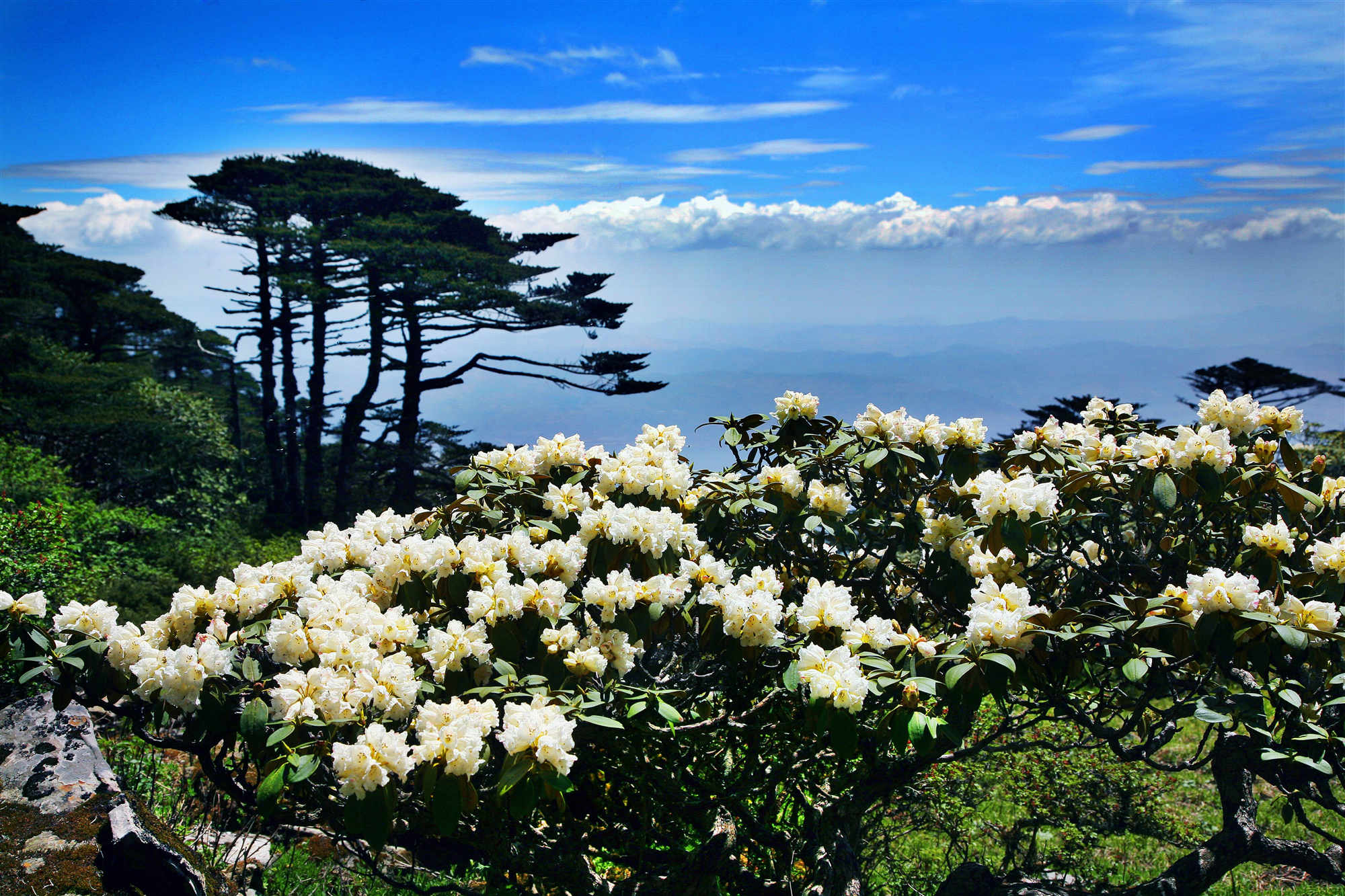
Main attractions in the scenic spot of Mt. Cangshan
Clouds of Mt. Cangshan
The clouds around Mt. Cangshan peaks are noted for irregular changes in a day and offer diverse marvelous views. The most famed are Wangfu Cloud (Waiting-husband Cloud) and Yudai Cloud (Jade Belt Cloud). The first is relevant to a love story between a princess and a hunter; it often emerges around the Yuju Peak in winter or spring, which plays an important part in local as a sign for fierce gale and terrifying waves on Erhai Lake that fishing boats will not go to sea. The Yudai Cloud is charming and lovely; it is also an omen for a good harvest to local Bai People; it often emerges after rains and looks like a milk-white jade belt gracefully twisting the Cangshan Mountain.
19 peaks of Mt. Cangshan
The 19 peaks of Mt. Cangshan stretch in a long ridge, just looks like an unceasingly flying dragon. They are toweringly connecting with the blue sky, erecting as painted screen which divides itself into two entirely different styles in the east and west. Walking in the fragrant trees and blooming flowers is just like walking in a fairyland. Various local featured floristics in the mountain make it a huge forest park; in total, there are over 6000 species plants in Cangshan Mountain; there are swaying broad-leaved forest, big and tall firs, and millions of azaleas, which are the season’s symbol and in great varieties, such as fiery-red Rhododendron simsli, snow-white Rhododendron decorum, cream-yellow Rhododendron molle, boldly Rhododendron russatum, and inaccessible Rhododendron redowskianum on the high branches.
18 streams of Mt. Cangshan
Between every two peaks of the Mt. Cangshan, there is a stream flying down and joining each other to the Erhai Lake. If the colorful flowers are the emotions of Mountain Cangshan, then the water amidst verdant forests and flowers is the soul of the mountain. The streams of Mt. Cangshan are clear and cool, while pools and ponds are graceful and elegant.
Between every two peaks of Cangshan Mountain, there is a stream flying down and flowing into the Erhai Lake.
Qingbi Stream
Qingbi stream, literally Clear and Green Stream, is worthy of the name. There is a popular saying among locals, one do not want to enjoy the beauty of other waters after a visit to Qingbi Stream. The Qingbi stream is just the example of all Dali waters. Flowing between Malong Peak and Shengying Peak, the Qingbi Stream looks like a playing dragon happily flying down from the lofty cliff and then crossing gorges and brooks. The water is crystal clear and cobble stones in it are beautiful and visible.
Xima Pond (Horse Washing Pond)
Located at the junction of Yuju Peak and Longquan Peak, Xima Pond is deemed as “a lake over the mountains with a 3920 m height above the sea level. Among all ponds and pools on Cangshan Mountain, Xima Pond is the most famous for both high altitude and pure water quality with superexcellent scenery. According to legend, Kublai Khan (the emperor who founded Yuan Dynasty (1271-1368)) once stationed here when his troops arrive in Dali and had his horse wash on the pond, that is why the pond was so named as Xima Pond (Horse Washing pond). Around the pond are thick azaleas and thick bushwood that the pond is gorgeous blazing with colors during the azalea season at the end of spring and the beginning of summer.
Ancient Cultural Relics Sites in the area of Mt. Cangshan
There are three relic sites, the Ancient Neolithic Cultural Relics Site, Taihe City Ruins (the capital of ancient Nanzhao Kingdom) and Qiemie City Ruins of Ancient Dali Kingdom. In Neolithic Cultural Relics Site, there are unearthed zaxes, stone chisels, characteristic half-moon-shaped stone blades, various utensils and potteries, exhibiting the cultural features of Dali in Neolithic age, and providing scientific evidences for the relevant researches.
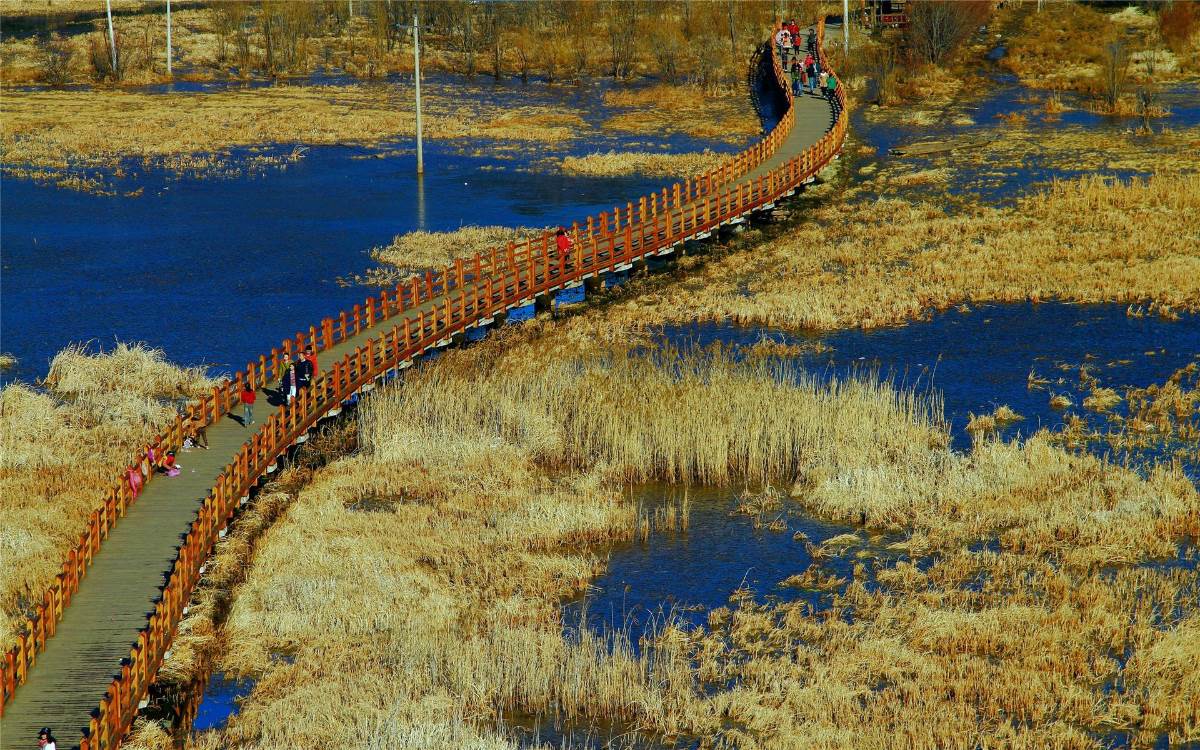
- $1168.00
- 8D7N DAYS
01. Driving through one of China's most amazing expressway-Yaxi Expressway, which is acclaimed as an "expressway in the clouds" as it ascends 7.5 meters for every kilometer.02. Take the famous pig-boat leisurely sailing on the …
Read More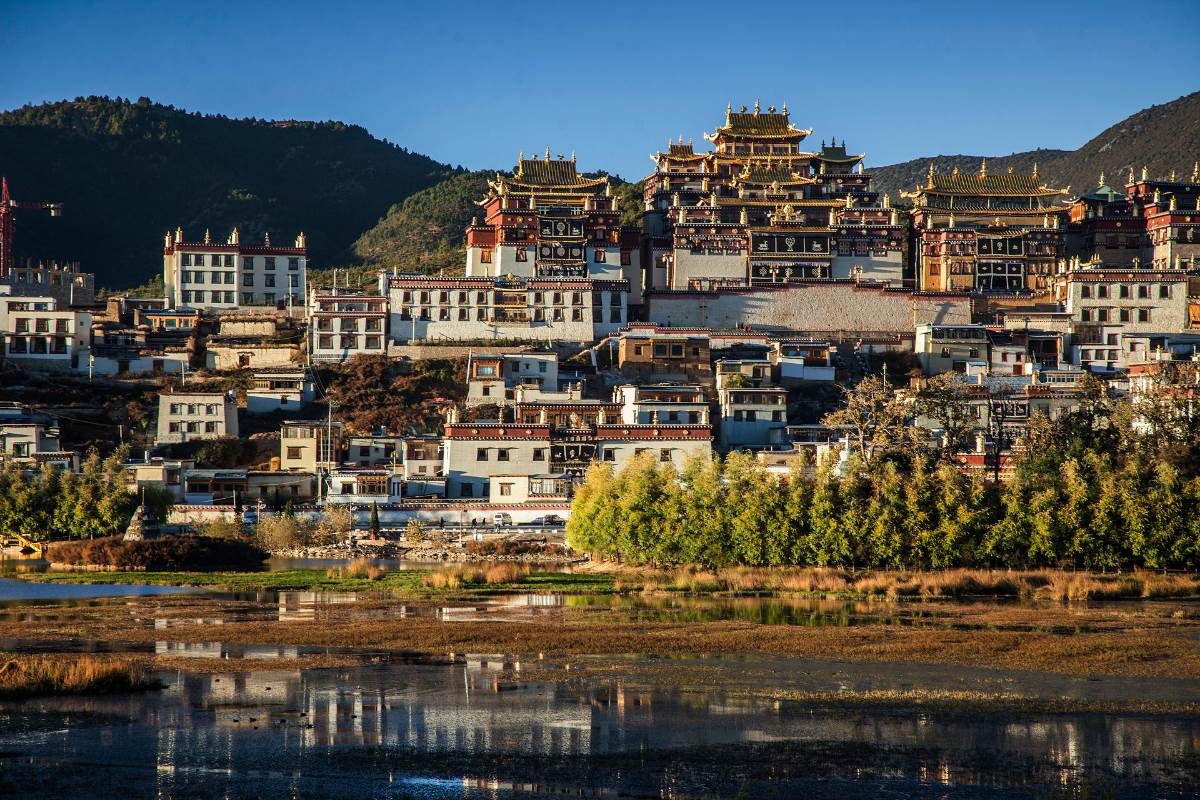
- $1498.00
- 11D10N DAYS
01. Have a walk in the believed-to-be “Paradise of Photographers” Xinduqiao to experience local Khampa Tibetan landscape and local people,enjoying the endless sub-alpine meadow, scattered yaks in Xinduqiao. 02. Visiting the highest town in…
Read More
- $898.00
- 7D6N DAYS
01. Immerse yourselves in old towns in Dali, Lijiang and Zhongdian, admire colorful minority costumes and exotic tradition cultures, meet the hospitality of unsophisticated Tibetan people…02. Enter deep into the Tibetan world of Shangri-La,…
Read More